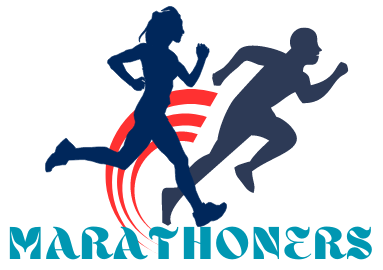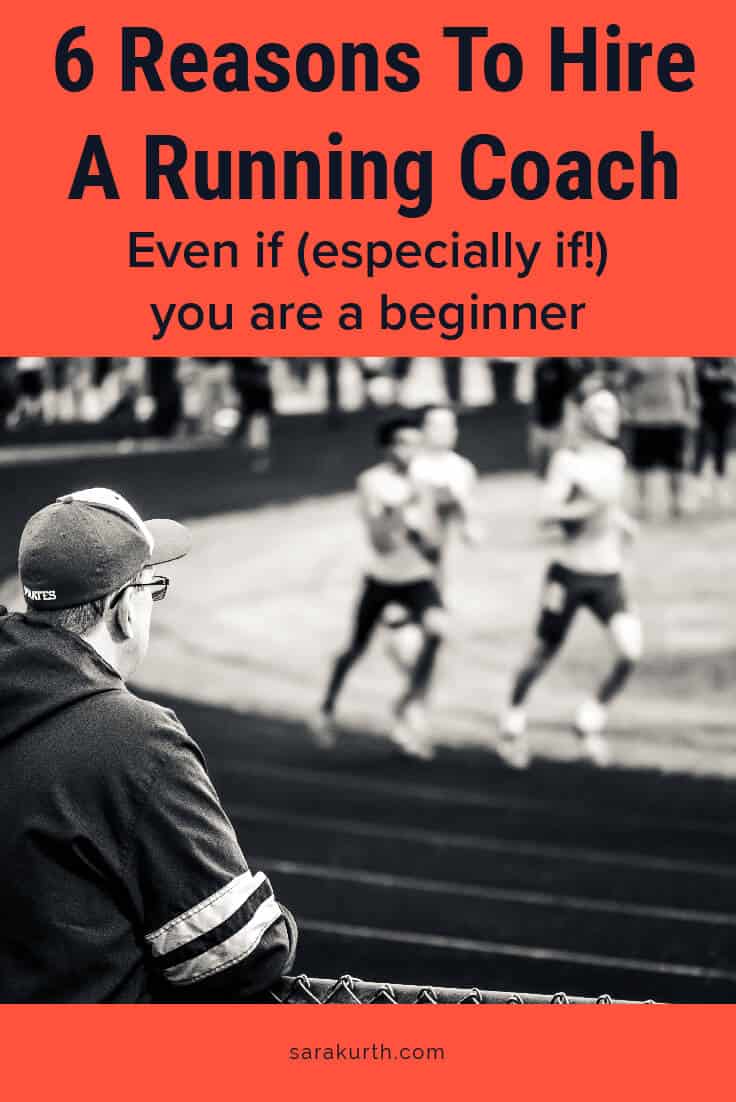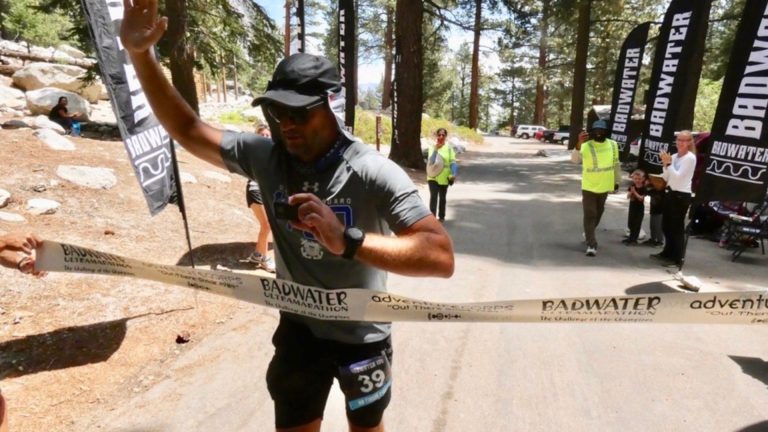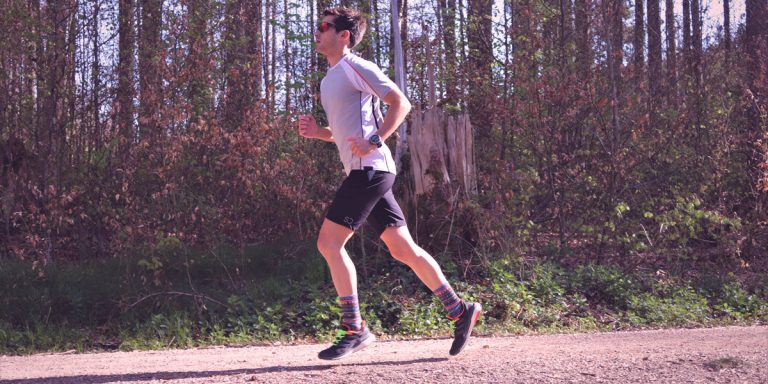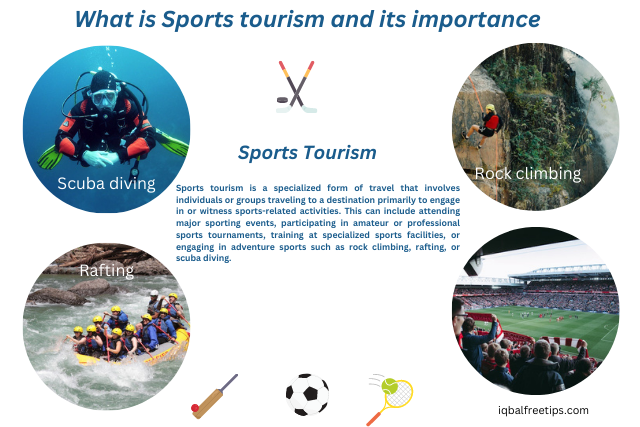All About Nude Running
Nude running is the act of running without wearing any clothing, typically done in private settings. Advocates of nude running often cite a feeling of freedom and a closer connection with nature as benefits.
Embracing the natural form during physical activity is a way to break free from societal norms and experience running in its purest form. However, it is important to consider laws and regulations regarding public nudity in the area where one wishes to engage in nude running.
We will explore the concept of nude running, its potential benefits, risks, and legal considerations. Let’s delve into the world of running au naturel and uncover what this unique practice entails.
What is Nude Running?
Nude running, also known as “clothing-optional running” or “naturist running,” is the act of running without wearing any clothes. Though it may sound unconventional, this practice is rooted in history and continues today as both a recreational activity and a body-positive movement. The tradition dates back to ancient Greece, where Olympic athletes like Orsippus competed nude to symbolize strength, freedom, and equality. In modern times, nude running is often embraced by naturists and is featured in organized events such as the Bare Buns Fun Run, Wiggle Jiggle & Giggle 5K, and Chilly Cheeks 5K at nudist resorts.
Here are some alternative terms for nude running:
- Barefoot Running
- Clothing-Optional Running
- Natural Running
- Naked Running
- Unclad Running
- Au Naturel Running
- Bare-Run
- Skin-Only Running
- Bare-All Running
Participants claim that nude running fosters a sense of liberation, encourages self-acceptance, and creates a uniquely supportive atmosphere. It removes societal judgments based on appearance or attire and replaces them with a shared experience of vulnerability and confidence. Some runners also engage in “naked runs” by leaving behind tracking devices, freeing themselves from digital pressures and performance metrics.
While safety and comfort (especially regarding chafing and sun protection) are important considerations, nude running appeals to those seeking authenticity, community, and a refreshing break from norms. Whether done solo in secluded nature spots or as part of a friendly race, nude running redefines both freedom and fitness.
Nude Running Facts
Here are fun and facts about nude running and its history:
1. The First Streaker Was an Olympian
In 720 BCE, Greek athlete Orsippus lost his loincloth mid-race—and won! He became the first recorded naked runner in Olympic history.
2. Nude Running Became the Norm
After Orsippus, ancient Greeks adopted nude running in all races, making it a cultural tradition and athletic standard.
3. Running Naked Was a Power Move
To contrast Persian modesty, ancient Greeks ran naked to showcase strength, freedom, and cultural pride.
4. ‘Gym’ Literally Means ‘Naked Place’
The word “gymnasium” comes from the Greek word gymnos, meaning “naked.” Greeks worked out nude—surrounded by statues!
5. Modern Athletes Still Pose Nude
ESPN’s Body Issue celebrates athletic physiques, much like the ancient Greeks did, reminding us that every body has a story.
6. ‘Naked Running’ Isn’t Always Literal
Today, “naked runs” can mean ditching your smartwatch or tracker—just running freely without tech.
7. Nudist Resorts Host 5Ks
Events like the Bare Buns Run and Chilly Cheeks 5K are held at clothing-optional resorts—fun, inclusive, and body-positive.
8. Nude Running is Body Positive
Runners say being naked with others becomes surprisingly normal—and even more accepting than traditional races.
9. Clothed Runners Are ‘Textiles’
In the nude running world, clothed racers are jokingly called “textile runners.” Regular races? “Textile events.”
10. Bras Are Optional in Nude Runs
Some nude runners wear sports bras for comfort, others don’t. It all depends on personal preference (and chest anatomy!).
11. Anti-Chafe Balm is Essential
Without fabric, friction is real. Nude runners swear by anti-chafe balms like Body Glide—more is more!
12. Yes, There’s Nude Running Merch
Even without pockets, you can buy nude runner gear—like wearable card holders—to support your stripped-down stride.
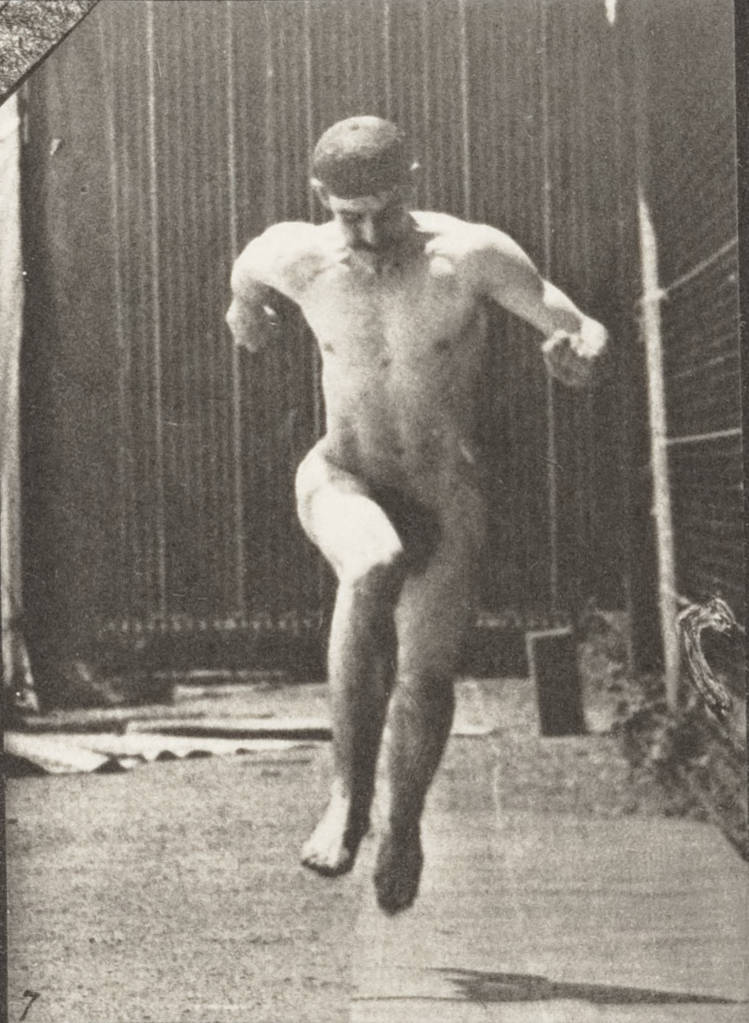
Credit: commons.wikimedia.org
The Origins Of Nude Running
Nude running has a history rooted in ancient civilizations and cultural traditions. Historical references and cultural influences have shaped this activity over time.
1. Ancient Greece: Birthplace of Athletic Nudity
The earliest recorded instance of nude running comes from the 720 BCE Olympic Games in Ancient Greece. According to historical accounts, a young Greek athlete named Orsippus of Megara was running in the stadion race—a sprint of roughly 200 yards—when his loincloth slipped off mid-race. Whether accidental or intentional, Orsippus completed the race in the nude and won. Rather than being punished, he was celebrated.
In fact, Orsippus was crowned the victor while naked, and his approach quickly set a precedent.
Soon after, nudity became the norm in many athletic events in Ancient Greece, particularly in the Olympics and other Panhellenic games. Competing naked (known as gymnos) was seen as a symbol of excellence and dedication to physical perfection. The word “gymnasium” even comes from the Greek word gymnos, meaning “naked.” These were places not just for exercise, but for philosophy, art, and the celebration of the human form.
2. Nudity as a Cultural and Political Statement
Nudity in ancient Greek athletics was not just practical—it was deeply philosophical and political.
While neighboring cultures such as the Persians considered public nudity shameful and indecent, the Greeks saw it as a mark of civilization. Greek nudity became a cultural symbol of superiority. By training and competing in the nude, Greek athletes not only honed their physical prowess but also affirmed their identity as free Greek citizens—distinct from the “barbarian” foreigners.
For the Greeks, a well-trained, naked body was a representation of virtue, discipline, and power. Statues from that era—like those of Olympic victors or gods like Hermes and Apollo—reflect this idealized version of the human physique, celebrating athleticism and heroism.
3. Nudity and Training in the Gymnasia
Ancient Greek gymnasiums were social and intellectual hubs. Athletes trained in the nude not only for sport but for military preparation. Gymnasia were also venues for public discourse, learning, and art—so the act of training naked was deeply woven into Greek everyday life, culture, and identity.
These facilities featured not only tracks and exercise areas but also baths, libraries, and lecture halls. The Greek obsession with balance—of body, mind, and spirit—was vividly expressed through nude athletic training.
4. The Decline of Nude Running
As the Roman Empire absorbed Greece and later as Christianity spread through Europe, attitudes toward public nudity shifted dramatically. Modesty and morality became tightly linked, especially in religious contexts. As a result, nude sports and competitions were increasingly viewed as indecent or even sinful.
By the early medieval period, public nudity was outlawed in most parts of Europe, and the practice of nude athleticism all but vanished from mainstream culture.
5. Modern Resurgence: Naturism and the Naked 5K
The 20th and 21st centuries saw a gradual resurgence of nude activities, often inspired by the naturist movement—a philosophy that promotes non-sexual social nudity as a form of freedom, self-acceptance, and body positivity.
Today, nude running has reemerged, particularly in:
- Naturist resorts, where nude 5K runs and trail events are common.
- Clothing-optional races, such as the “Bare Buns Fun Run” or “Wiggle, Jiggle & Giggle 5K.”
- Digital minimalism in running, where the idea of a “naked run” might mean running without devices or tracking.
These events are often family-friendly, inclusive, and welcoming. Participants describe them as empowering experiences that reconnect them to their bodies, nature, and a supportive community.
Cultural Influences On Nude Running
Japanese Shinto beliefs emphasize the purity of the body, leading to nude running rituals as a way to cleanse the spirit.
In some African tribes, nude running symbolizes freedom, strength, and unity within the community.
Modern nudist movements promote nude running as a way to embrace body positivity and break societal taboos.
Nude Running Etiquette
Discover the unwritten rules of nude running etiquette and embrace the liberating experience of running in your natural state, keeping in mind the importance of respect, discretion, and comfort. Explore this unique activity while staying mindful of your surroundings and fellow runners.
Choosing Suitable Locations
- Opt for secluded areas away from public view or designated nudist-friendly locations.
- Be mindful of local laws and regulations regarding public nudity to avoid any legal issues.
Respecting Others’ Comfort Zones
- Avoid pressuring others to join or judging those who choose not to participate.
- Keep a respectful distance from non-participants to ensure everyone feels comfortable.
Legal Considerations Of Nude Running
Considering legal implications is crucial when discussing nude running. Understanding the public nudity laws, legal boundaries, and potential consequences is essential to ensure a safe and enjoyable experience for all involved.
Public Nudity Laws
Nude running falls under public nudity laws, which vary significantly across different jurisdictions. While some areas may have specific regulations allowing for nude activities in designated places, others may strictly prohibit public nudity. It is vital to research and understand the local laws and regulations before engaging in nude running to avoid potential legal issues.
Legal Boundaries And Potential Consequences
Engaging in nude running beyond the confines of designated nudist areas or private properties with explicit consent can result in legal consequences. These consequences may include fines, potential criminal charges, and legal action from individuals who may feel discomfort or offense due to public nudity. It is essential to respect legal boundaries and consider the potential ramifications to uphold the safety and well-being of oneself and others.
Tips For Getting Started With Nude Running
Embarking on the journey of nude running can be both exhilarating and liberating. However, if you are new to this unique form of exercise, it is essential to take some practical considerations and precautions into account. Building confidence and being mindful of certain factors will make your nude running experience safe and enjoyable. Here are some useful tips to get you started:
Building Confidence
Confidence plays a crucial role in embracing nude running. Here are a few simple steps you can take to build your confidence:
- Start in a Private Space: Begin by running in a secluded area such as your backyard or a private beach to help ease any initial self-consciousness.
- Gradually Increase Exposure: Gradually expose yourself to running in more public spaces once you feel more comfortable with your naked body.
- Find Like-Minded Individuals: Connect with a nudist or naturist community for support and to share experiences. Their encouragement can boost your confidence significantly.
- Practice Positive Self-Talk: Focus on self-acceptance and positive reinforcement. Remind yourself that nude running is a natural and healthy activity.
- Avoid Comparisons: Refrain from comparing your body to others. Everyone has unique attributes and embracing your own uniqueness will help boost your confidence.
Practical Considerations And Precautions
While building confidence is essential, it is also important to keep in mind some practical considerations and take necessary precautions before you hit the trails. Here are a few tips:
- Wear Sunscreen: Protect your skin from harmful UV rays by applying sunscreen with adequate SPF to all exposed areas of your body.
- Consider the Weather: Check the weather forecast beforehand to ensure you’re prepared for heat, cold, rain, or any other extreme weather conditions.
- Check Local Laws and Regulations: Familiarize yourself with any laws or regulations regarding nudity in your area. Make sure you adhere to legal guidelines to avoid any potential legal issues.
- Stay Hydrated: It is important to stay hydrated during any physical activity. Carry a water bottle with you to replenish fluids regularly.
- Mind Your Surroundings: Be mindful of your surroundings and respect others’ boundaries. Ensure you choose running routes that are appropriate and considerate of public spaces.
- Listen to Your Body: Pay attention to any discomfort or signs of overexertion during your runs. Take breaks when needed and seek medical advice if required.
By following these tips, you can confidently and safely begin your nude running journey. Remember, the most important aspect is to embrace your body and enjoy the freedom that nude running provides.
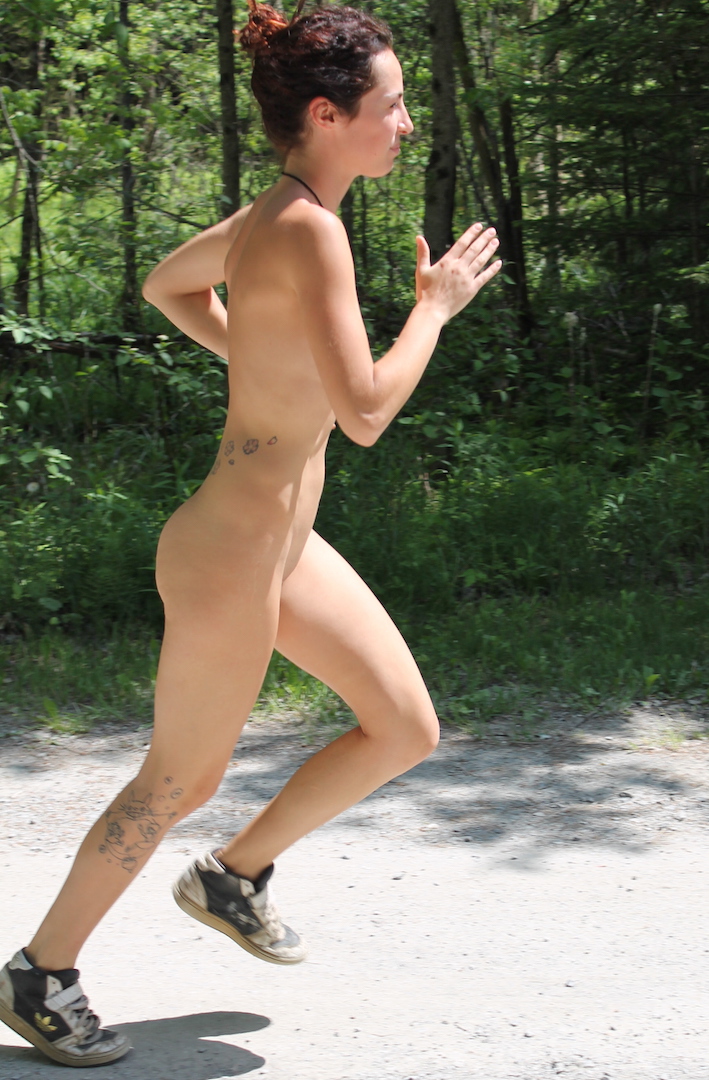
Credit: www.bareoaks.ca
Advantages of Nude Running
1. Body Positivity
Nude running helps promote body acceptance by removing the pressure to look a certain way. It encourages you to appreciate your body for what it can do rather than how it looks. Over time, it builds self-esteem and shifts focus from appearance to function, health, and confidence.
2. Freedom of Movement
Without restrictive clothing, your body can move more naturally and fluidly. There’s no tugging fabric, tight waistbands, or chafing seams to slow you down. This increased range of motion often leads to a more enjoyable and efficient run, especially for those seeking a minimalist, liberating experience.
3. Improved Confidence
Running nude requires stepping outside your comfort zone. But as you become more comfortable in your skin, your self-confidence grows. Being seen—and accepted—without clothing can be empowering, teaching you to value yourself regardless of societal standards or expectations.
4. Enhanced Sensory Awareness
With nothing between your skin and the environment, you become more attuned to the elements. You can feel the breeze, sun, and ground more vividly. This heightened sensory awareness can make your run feel more connected, grounding, and alive.
5. Stronger Community Bonds
Nude races and group runs often foster a uniquely accepting and supportive atmosphere. Without clothing, social hierarchies based on brands or appearances disappear. Everyone is equal, which encourages deeper human connection, open-mindedness, and a sense of shared vulnerability.
6. Stress Relief
The act of running itself is a known stress reliever, but doing it without clothes can amplify this effect. It strips away more than just fabric—it sheds societal pressures, body shame, and expectations. Many nude runners report feeling lighter, freer, and more relaxed after a session.
7. Better Skin Breathability
Clothes can trap sweat, bacteria, and heat against the skin. Running nude allows your body to cool more naturally and reduces the chance of rashes or irritation. With good hygiene and sun protection, your skin stays healthier and feels fresher post-run.
8. Mindfulness & Presence
Without tech, gear, or clothing distractions, you focus more on the present moment. Each step, breath, and sensation becomes part of the experience. Nude running naturally invites mindfulness, helping you tune into your body and surroundings more deeply than a typical workout.
9. Reduced Chafing (with precautions)
When properly prepared with anti-chafe balm, nude running can actually reduce irritation compared to sweaty clothes rubbing against your skin. You avoid tight spots and seams that often cause blisters and friction burns, especially on long runs or in hot weather.
10. Connection to Nature
There’s something primal and deeply satisfying about running through nature the way our ancestors did. Without clothes, you feel the earth, air, and elements in a direct, unfiltered way. Many runners describe this connection as grounding, freeing, and even spiritual.
What are the risks for nude running?
While nude running can be a freeing and empowering activity for many, there are some inherent risks and challenges to consider. Below are the main risks and problems associated with nude running:
1. Skin Irritation and Chafing
One of the most common risks of nude running is chafing. Without the protection of clothing, skin can rub against other skin, causing irritation, redness, and discomfort. Areas like the inner thighs, underarms, and under the arms can be particularly vulnerable. Over longer distances or during extended running sessions, this can lead to painful abrasions or raw spots.
Solution:
Using anti-chafing creams (like Body Glide) can help reduce friction. Some runners also opt for applying petroleum jelly to sensitive areas before a run to prevent chafing.
2. Sunburn
Running without clothing means your skin is exposed to the sun’s UV rays for longer periods, increasing the risk of sunburn. Even on overcast days, UV rays can still cause damage to the skin, especially on areas that aren’t usually exposed to direct sunlight.
Solution:
Apply broad-spectrum sunscreen before heading out for a run, focusing on areas like the back, shoulders, and any other skin that will be exposed. Reapply sunscreen as needed if running for long durations.
3. Social and Legal Issues
In many areas, running in the nude could be considered a form of public indecency, which may violate local laws, leading to fines or arrests. Even in private or naturist settings, some may face uncomfortable social interactions or reactions from onlookers who might not understand or appreciate the practice.
Solution:
Ensure you are running in a safe and legal location, such as naturist resorts, clothing-optional events, or private spaces. Always check the rules and regulations of your community or race before participating in a nude running event to avoid any legal complications.
4. Safety Concerns
Nude runners are more vulnerable to environmental hazards, such as insects, sharp objects, or even wildlife. Without clothing to protect you, a thorn, insect bite, or encounter with an animal could cause injury or discomfort.
Solution:
Running in a controlled or protected environment, such as a park or track, can reduce exposure to harmful elements. Consider wearing appropriate footwear to protect your feet from sharp objects or rough terrain.
5. Weather Conditions
Nude running is particularly vulnerable to weather conditions, both hot and cold. In extreme heat, you might risk overheating and dehydration. On the other hand, running in cold weather can cause hypothermia or frostbite, as your body lacks the insulation that clothing provides.
Solution:
Choose your running times carefully based on weather conditions. In hot climates, it is crucial to stay hydrated and take breaks. In cold climates, warm-up and avoid running in freezing conditions to prevent exposure to the cold.
6. Discomfort from Unfamiliarity
For first-time participants, running in the nude can feel uncomfortable or awkward. People may feel self-conscious or exposed, especially if they’re not used to being in a state of undress in public or social settings.
Solution:
Start running in private or at private events where you feel more comfortable. Over time, you may get used to the freedom and ease that comes with running without clothes.
7. Hygiene Concerns
Running in the nude may increase the likelihood of sweat and dirt accumulating on your skin, leading to hygiene concerns. This is especially true if running through mud, dirt, or dusty paths. Additionally, areas that are naturally more sensitive, such as the genitals, may need extra attention when it comes to cleanliness.
Solution:
Shower before and after a nude run to prevent any bacterial build-up. Consider carrying wet wipes or sanitizing products in case you are unable to shower immediately after the run.
8. Inadequate Foot Protection
Running without shoes or proper footwear can increase the risk of foot injuries, such as cuts, bruises, or sprains, especially on uneven surfaces like gravel, rocks, or asphalt. It’s important to keep in mind that barefoot running carries its own set of risks.
Solution:
Wear appropriate running shoes to protect your feet, or choose a soft surface like grass to reduce the chance of injury. If participating in a barefoot run, take extra caution and make sure the terrain is safe.
9. Allergies and Exposure to Allergens
Running outdoors without clothing increases your exposure to potential allergens, such as pollen or poison ivy, which could cause an allergic reaction. Your skin is also more exposed to bug bites, such as from mosquitoes or ticks.
Solution:
Be aware of the seasonal risks in your area, and consider running in the early morning or late afternoon when pollen levels are lower. Use insect repellents or wear protective gear if necessary to avoid allergic reactions.
10. Increased Exposure to Injury
Without clothing to shield you from accidental bumps or falls, you may face a higher risk of skin abrasions or more significant injuries. For example, falling on hard surfaces without the protection of clothing could leave you with bruises or cuts.
Solution:
Focus on running in safe, familiar areas and avoid challenging or risky terrain. If you’re concerned about injuries, consider wearing light, minimal gear to give some protection while maintaining the benefits of running nude.
11. Social Reactions and Misunderstandings
In many public settings, being naked in the presence of others may provoke negative reactions, such as embarrassment or awkwardness. People who are not familiar with nude running may react negatively, thinking it’s inappropriate or offensive.
Solution:
Ensure that you are participating in private events or naturist settings where being nude is accepted and understood as a form of self-expression. If you’re running in public spaces, consider the attitudes of the local community and the social context.
Conclusion
So, nude running, while a liberating and positive activity for many, comes with several challenges and risks. Like any sport, it’s crucial to approach nude running with an understanding of the risks involved and take the necessary precautions to minimize them.
Frequently Asked Questions For Nude Running
Can I Run Nude In Public?
Yes, running nude in public is considered illegal in most countries due to public indecency laws.
Is Nude Running Beneficial?
Nude running can have benefits such as improved freedom of movement, increased body awareness, and enhanced self-confidence.
How Can I Maintain Privacy While Nude Running?
To maintain privacy while nude running, choose remote locations with low foot traffic, run during off-peak hours, or consider joining organized nudist events.
Conclusion
In sum, nude running offers a liberating experience while connecting with nature. As the trend gains popularity, it’s important to consider its benefits and risks. Whether you choose to partake or not, it’s clear that individuals are seeking unconventional ways to enjoy fitness and nature.
Embrace the unique experience or stick to traditional running attire, the choice is yours.
